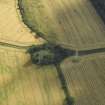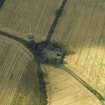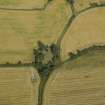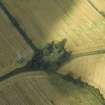Culross, West Church And Churchyard
Church (Medieval), Churchyard (Medieval)
Site Name Culross, West Church And Churchyard
Classification Church (Medieval), Churchyard (Medieval)
Alternative Name(s) Culross, Old Parish Church; Old Kirk; Wester Kirk; West Kirk
Canmore ID 48029
Site Number NS98NE 2
NGR NS 97953 86485
Datum OSGB36 - NGR
Permalink http://canmore.org.uk/site/48029
- Council Fife
- Parish Culross
- Former Region Fife
- Former District Dunfermline
- Former County Fife
NS98NE 2.00 97953 86485.
NS98NE 2.01 97926 86480 Dalgleish Mausoleum
(NS 9796 8648) West Church (NR) (remains of)
OS 6"map, (1967)
The pre-Reformation parish church of Culross, dating from a very early period, has been in ruins since before 1633. It was a plain oblong building, 70'7" x 16'1" within 2'8" thick walls, which have been extensively rebuilt. A mortuary aisle was added to the S side in the 17th century. There are three 16th century tombstones placed against E gable, within the church.
RCAHMS 1933, visited 1928; D MacGibbon and T Ross 1896-7; H Scot (Fasti Eccles Scot) 1915-61.
The walls of this church stand to a maximum height of 2.6m. The aisle on the S (used as a burial vault) is now roofless and decaying, though it has obviously been restored at a late period. the whole building is in poor condition, almost overgrown by trees. The graveyard contains stones dating from 1620.
Visited by OS (M H) 10 July 1953.
An archaeological assessment and watching brief were undertaken along the route of the Longannet pipeline in May 1996. The desk-based assessment confirmed a series of sites within a 400m wide corridor, including:
NS 9796 8648 Old Culross Parish Church
Sponsor: Penspen Environmental.
B Finlayson and D Alexander 1997
REFERENCES:
SCOTTISH RECORD OFFICE:
Repair of Culross Parish Church (St Michael's). Note of proportion of the cost. Account Book kept by Edward Callender, 1716. GD 221/103
Field Visit (19 March 1928)
Old Parish Church, Culross.
Within a churchyard half a mile north-west of Culross is the ruin of the church which served the parish before the Reformation. It has been a plain oblong building, measuring 70 feet 7 inches by 16 feet 1 inch, within walls which averaged 2 feet 8 inches in thickness. A mortuary aisle has been added on the southern side in the 17th century. The walling of the church has been extensively rebuilt, the only original feature left being the lower part of a lancet window on the south side. When this restoration took place, north and south doors were formed, and the lintels of these are old tombstones. The outer lintel above the south door is a grave-slab with the front towards the inside, while the internal lintel is a slab 5 feel 9 ½ inches in length and tapering from 1 foot 11 inches at the head to 1 foot 7 ½ inches. This latter slab bears an incised cross with a circular head containing eight trefoiled arms. On the sinister side of the shaft is a sword with straight quillons and bulbous pommel. Two slabs have been inserted on the inner side of the north door. The upper, measuring 5 feet 7 inches in length and tapering from 1 foot 7 inches to 1 foot 2 inches, bears an incised cross, like that on the inner lintel of the south door, but with a stepped base; on the dexter side is what may be intended for a tradesman's square, and on the sinister side is a sword with depressed quillons and bulbous pommel. The lower slab, which measures 3 feet 11 inches in length and tapers from 1 foot 6 ½ inches to 1 foot 3 inches, bears a sword with depressed quillons and bulbous pommel, also a small axe. On the outer side of the doorway is part of a coped stone, the present length of which is 2 feet 1 inch, the width of each side being 8 inches. One side bears a sword with straight quillons and triangular pommel, the other a hunting horn with its string.
Within the church three weatherworn 16th century tombstones, each measuring about 6 feet 4 inches by 2 feet 6 inches, have been placed against the east gable. On the centre stone can be traced a shield flanked by the initials C.S. The shield is parted per pale. The dexter coat is illegible, but the sinister represents three buckles on a bend, for Stirling. Above the shield can be deciphered AETATIS [SVAE] and below it OBEIT (sic) 9 FEBRVARII 1592. Fragments of 17th-century heraldic stones are built into the south wall of the church, above the entrance to the aisle, and on one of these is a shield surmounted by a shell and bearing: A saltire, on a chief three mullets, for Bruce. Of the memorials in the churchyard the most interesting stones are those of John Callender (died 1664), and of his wife, Margaret He[nders]on (died 1662). On each of these is a shield parted per pale and bearing: dexter, a bend between six billets, for Callender; sinister, between three buckles in chief and three mullets in base, five piles, for Henderson .
HISTORICAL NOTE. An Act of Parliament in 1633 states that "the kirk callit the paroche kirk of Culrois is ane old kirk quhairine seruice is not nor hes not beine vsit since memorie of man, and is altogether rwinous, decayit, and falline downe in divers pairts." The cure of the parish was therefore transferred to the abbey church (NS98NE 3), which was "to be callit in all tyme coming the paroche kirk of Culrois."
RCAHMS 1933, visited 19 March 1928.












































































